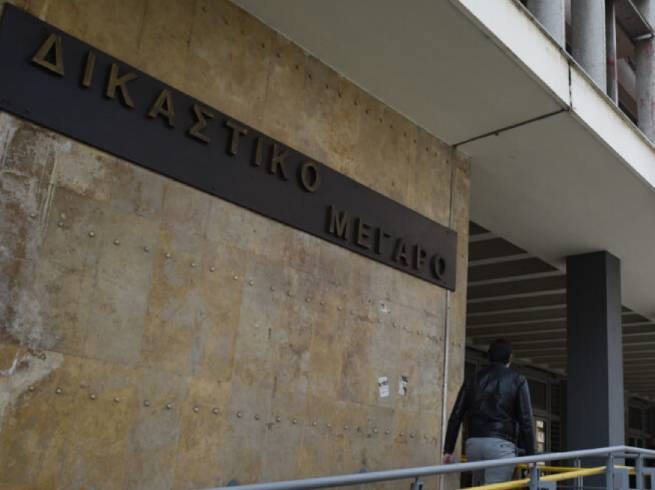In the latest report for 2022, ΙΝΕ ΓΣΕΕ raises alarms on a number of issues, including the low level of the minimum wage in Greece, while emphasizing also that the protection of workers in collective agreements is very limited.
Indicative is the fact that, according to the directive of the European Commission, Greece should increase the coverage rate of collective agreements by 54.2 percentage points, but in reality it does not reach 35%. Among other things, the Labor Institute notes that after the increase in the minimum wage in the country in 2022, Greece has risen to 11th place from 16th, where it was in 2021. This is a positive thing, but the minimum wage in Greece is still below a decent standard of living. The reason is a sharp drop associated with rising prices, so in 2023 there should be a new and significant increase in the minimum wage.
He also points out that the protection of workers in Greece by collective labor agreements is very limited. It is emphasized that in the second quarter, the employment rate was the second lowest in EUand women’s participation in the labor market was 22.1% lower than the Eurozone average.
The 2022 Mid-Term Report concludes:
“Despite the ongoing energy crisis and the slowdown in global GDP growth, the Greek economy looks resilient, maintaining strong real GDP growth in the first half of 2022 compared to the eurozone average (8% and 7.7% in the first and second quarters for compared to 5.5% and 4.3% on average for the eurozone, respectively.) However, 2023 is a year of major challenges and uncertainty for the Greek economy, which lacks strong endogenous mechanisms to sustain its momentum.
- Consumption and exports of services continue to be the main determinants of economic activity, as they increased by 3.4 billion euros and 3 billion euros, respectively, in the second quarter of 2022. Total investment across all sectors of the economy remains relatively stable at a low level (12% of GDP in Q1 and Q2 2022) and well below the eurozone average (about 10 percentage points of GDP).
- Also of concern is the continued growth in product imports. In Q2 2022, it accounted for 44.4% of GDP compared to 34.3% of GDP in the same quarter of 2021. This growth exceeds that of exports, leaving Greece with a trade deficit of 6.6% of GDP in Q2 2022. The trade deficit, coupled with the necessary fiscal adjustment, exacerbates growth sustainability and economic fragility.
- At the sectoral level, the sector of consolidated trade, transport, warehousing, accommodation and catering services made the largest contribution to the gross value added of production (annual growth of about 4 billion euros in the second quarter of 2022). Limited growth was also recorded in manufacturing, but its contribution to domestic output is limited (5.5 percentage points of GDP below the eurozone average). The contribution of professional, scientific and technical activities was equally insignificant. These figures point to the need for industrial restructuring to improve the sustainability of our country’s growth.
- The fiscal system of the Greek economy is coping with the shocks caused by the pandemic and the inflationary crisis. However, according to all official estimates, the general government’s primary balance will be in surplus in 2023.
- The relatively large increase in indirect taxes during the inflationary crisis has preserved the problem of non-progressiveness of the country’s tax system. In the first half of 2022, Greece ranked third among eurozone member states in terms of the ratio of indirect to direct taxes, behind Latvia and Portugal.
- Rising inflation appears to have improved the government’s financial position by positively influencing the relationship between the government’s interest payments and its total income from direct taxes, indirect taxes, and social contributions. In particular, in the period from the 3rd quarter of 2021 to the 2nd quarter of 2022, this indicator in our country amounted to 5.6%, having decreased by 2 percentage points compared to the pre-pandemic period. At the same time, inflation contributed, in particular, to a slowdown in the growth of the public debt ratio. According to the European Commission, government debt as a percentage of GDP will be 171.1% in 2022 (a decrease of 23.4 percentage points from the previous year) and 161.9% in 2023.
- However, despite this improvement, the government’s fiscal position is expected to remain relatively volatile given, inter alia, worsening household purchasing power, rising interest rates due to international monetary tightening, and geopolitical instability. The government’s solvency ratio is estimated to remain ultra-Pontian in 2022, putting upward pressure on financing needs and the stock of public debt. Finally, according to the forecasts of the European Commission, the financial position of the general government will remain precarious in 2023-2024, and the solvency ratio will be in Ponzi status.
- Against this backdrop, fiscal management of the inflationary crisis needs to be carried out prudently, prioritizing measures that support the disposable incomes of the most vulnerable social groups, increase liquidity flows in the economy, and have a high expansionary effect in terms of income and quality employment. Such a difficult choice is both a challenge and a necessity for ensuring the country’s solvency in the medium and long term, especially in the context of the deteriorating external environment of the economy.
- In the first half of 2022, the employment rate and the unemployment rate showed a significant improvement compared to 2021. In the second quarter, the employment rate was 60.5% and the unemployment rate was 12.2%. The labor market has already recovered from the shock caused by the pandemic crisis and does not seem to be negatively affected by the current energy crisis and inflation surge. However, its structural problems remain.
- The largest growth in employment is observed in the accommodation and catering sector, followed by trade. In essence, the private sector creates jobs in sectors with low value added, low productivity and low wages. Employment in the tertiary sector of the economy has recovered to 2008 levels, while employment in the secondary sector remains 38% lower than in 2008. There was a significant increase in half-employment in Q2 2021 and Q1 2022, which was reversed in Q2 2022. 50% of the semi-employed would like to work full-time but have not been able to find a full-time job. The bulk of underemployment occurs at the age of 30-44 years, followed by 45-64 years.
The full text of the report can be found at “>link (in Greek).







More Stories
Study: cause of fatal blood clots identified after coronavirus vaccinations with J&J and AstraZeneca vaccines
The world's most popular illusionist was accused of sexual advances by 16 women (video)
ΕΦΚΑ: which pensioners will receive retroactive payments of up to 50,000 euros in May